 Thanks to the recent IPO of Green Dot Corp. (NYSE: GDOT), the upcoming NetSpend IPO, and the tightening of consumer credit, public awareness of prepaid card products has grown. Investors, researchers, and journalists frequently ask GetDebit.com for information about the prepaid debit card market. There is plenty of excellent information available as background, but some of it can be difficult to find. We’ve pulled together a list of our favorite research reports about the prepaid debit card industry.
Thanks to the recent IPO of Green Dot Corp. (NYSE: GDOT), the upcoming NetSpend IPO, and the tightening of consumer credit, public awareness of prepaid card products has grown. Investors, researchers, and journalists frequently ask GetDebit.com for information about the prepaid debit card market. There is plenty of excellent information available as background, but some of it can be difficult to find. We’ve pulled together a list of our favorite research reports about the prepaid debit card industry.
Here are 15 of the top (free) resources for information about prepaid debit cards, including information about how prepaid cards work, the demographic of prepaid card users, and how to size the market. Some of these reports are from the early days of the prepaid card market and are provided as background information. Most of the other reports are very recent, and include demographic and market information that can be very helpful in understanding the prepaid debit card marketplace in 2010 and beyond.
We are always looking for more research in prepaid. If you have additional resources you’d like to bring to our attention, please contact us. We’ll be happy to add them to the list.
Prepaid Research From Government Organizations
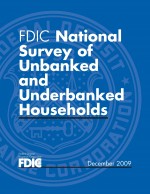 The recent (December, 2009) FDIC National Survey of Unbanked and Underbanked Households which found that “An estimated 7.7 percent of U.S. households, approximately 9 million, are unbanked” and “an estimated 17.9 percent of U.S. households, roughly 21 million, are underbanked”. The FDIC also published its data (in an excellent, interactive format) online at EconomicInclusion.gov. The report is one of the most comprehensive available. In January 2009, the Federal Deposit Insurance Corporation (FDIC) sponsored a special supplement to the U.S. Census Bureau’s Current Population Survey (CPS) to collect national, state, and metropolitan statistical area (MSA) data on the number of U.S. households that are unbanked and underbanked, their demographic characteristics, and their reasons for being unbanked and underbanked. Almost 47,000 households participated in the survey.
The recent (December, 2009) FDIC National Survey of Unbanked and Underbanked Households which found that “An estimated 7.7 percent of U.S. households, approximately 9 million, are unbanked” and “an estimated 17.9 percent of U.S. households, roughly 21 million, are underbanked”. The FDIC also published its data (in an excellent, interactive format) online at EconomicInclusion.gov. The report is one of the most comprehensive available. In January 2009, the Federal Deposit Insurance Corporation (FDIC) sponsored a special supplement to the U.S. Census Bureau’s Current Population Survey (CPS) to collect national, state, and metropolitan statistical area (MSA) data on the number of U.S. households that are unbanked and underbanked, their demographic characteristics, and their reasons for being unbanked and underbanked. Almost 47,000 households participated in the survey.
Our second recommended report is a short and sweet one-pager. But it quickly shows how the underbanked population is split along demographic lines, including by income, race, and education. Do yourself a favor and take a minute to scan this report.  The City of New York published the results of a 2009 Study showing the concentration of underbanked households in certain eighborhoods. The results are quite striking: Citywide Financial Services Study. The Study found that “In New York City, more than 13 percent of households have no bank account”, and that “New York City’s unbanked households are highly concentrated in certain neighborhoods.”
The City of New York published the results of a 2009 Study showing the concentration of underbanked households in certain eighborhoods. The results are quite striking: Citywide Financial Services Study. The Study found that “In New York City, more than 13 percent of households have no bank account”, and that “New York City’s unbanked households are highly concentrated in certain neighborhoods.”
Our third recommended report was published by the FDIC and provides an overview of “Bank on San Francisco” (part of the national “Bank On” initiative) titled From Mattress Money to Checking Accounts: A Profile of Bank on San Francisco. In the report, the size of the market is described as: “Nationally, as many as 22 million people lack basic checking and savings accounts, and are generally referred to as the ‘unbanked’ or ‘underbanked’”.
One of the original, and still quite good, publications about the debit card industry was produced by the FFIEC a number of years ago. It is still relevant, and an excellent resources about debit cards and the debit card industry. A Guide to the Debit and ATM Card Industry
Publications by the Center for Financial Services Innovation (CFSI)
The Center for Financial Services Innovation consistently publishes excellent reports and analyses about financial products, including prepaid debit cards. The CFSI is the nation’s leading authority on financial services for underbanked consumers. The CFSI believes “that addressing the needs of underbanked consumers as a market will deliver broad, long-term change throughout the financial services landscape by creating mutual benefit for both the underbanked and the companies serving them.” The following are some of our favorite CFSI reports:
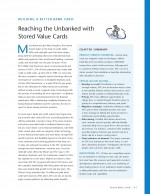 Building a Better Bank Account, a relatively early, yet still extremely relevant, article describing how banks can better service the underbanked population using stored value cards or prepaid cards. This is an excellent introduction to the prepaid card market, and was quite prescient in suggesting that “Refillable, branded SVCs would function like a debit card, allowing customers to do almost anything they could do with a credit card: make purchases over the Internet, buy groceries, pay for car repairs. Customers could receive direct deposits,
Building a Better Bank Account, a relatively early, yet still extremely relevant, article describing how banks can better service the underbanked population using stored value cards or prepaid cards. This is an excellent introduction to the prepaid card market, and was quite prescient in suggesting that “Refillable, branded SVCs would function like a debit card, allowing customers to do almost anything they could do with a credit card: make purchases over the Internet, buy groceries, pay for car repairs. Customers could receive direct deposits,
withdraw funds from ATM machines, conduct point-of-sale debit purchases from the local grocery store, pay bills online, and buy money orders from the post office.”
 In 2009, the CFSI partnered with paybefore.com to understand current trends in general purpose reloadable (GPR) prepaid cards, and conducted an Internet poll of industry executives. CFSI then interviewed 18 industry leaders across the spectrum of participants in the prepaid value chain. All interviews were conducted with senior level managers, generally the person responsible for the prepaid card business within a large company or the chief executive officer of a smaller company. The results of the study are available in The Industry Forecast for Prepaid Cards, 2009.
In 2009, the CFSI partnered with paybefore.com to understand current trends in general purpose reloadable (GPR) prepaid cards, and conducted an Internet poll of industry executives. CFSI then interviewed 18 industry leaders across the spectrum of participants in the prepaid value chain. All interviews were conducted with senior level managers, generally the person responsible for the prepaid card business within a large company or the chief executive officer of a smaller company. The results of the study are available in The Industry Forecast for Prepaid Cards, 2009.
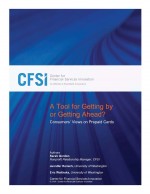 Not content to listen to industry experts, the CFSI asked actual prepaid card users how they user their prepaid cards and whether the cards help them manage their money and start down a path toward financial prosperity. The results are reported in A Tool for Getting by or Getting Ahead? Consumers’ Views on Prepaid Cards. The study reports: “Our findings give evidence about the potential of prepaid cards to enhance families’ financial well-being. We present new data about prepaid card users’ day-to-day financial lives, including the nature and amount of income sources, family expenses, and use of different financial services.”
Not content to listen to industry experts, the CFSI asked actual prepaid card users how they user their prepaid cards and whether the cards help them manage their money and start down a path toward financial prosperity. The results are reported in A Tool for Getting by or Getting Ahead? Consumers’ Views on Prepaid Cards. The study reports: “Our findings give evidence about the potential of prepaid cards to enhance families’ financial well-being. We present new data about prepaid card users’ day-to-day financial lives, including the nature and amount of income sources, family expenses, and use of different financial services.”
In the fall of 2009, the CFSI took a look at underbanked consumer preferences between checking accounts and prepaid cards. The results are published in Prepaid Cards vs. Checking Accounts inBrief
Publications by the Network Branded Prepaid Card Association (NBPCA)
The Network Branded Prepaid Card Association (NBPCA) is an industry group that promotes (not surprisingly) network branded prepaid cards (including cards having network logos, such as Visa, MasterCard, American Express and Discover). The NBPCA’s stated mission is “active on behalf of its members to enhance the environment for the success of network branded prepaid cards.” The association produces a number of papers, studies and reports, some of which are an excellent resource for those trying to understand the market. Four of our favorite reports include:
The 2009 Payment Systems Evolution and Branded Prepaid Card Analysis by Bretton Woods
The 2008 Consumer Branded Gift Card Users Survey
Tips for Having a Great Experience with Network Branded Prepaid Cards
Other Prepaid Card Research Publications
Some of the best publications and studies about prepaid debit cards have come from non-profit research groups. Here are four of our favorites:
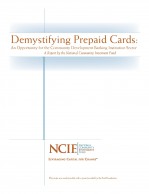 A publication from the National Community Investment Fund (NCIF) which was prepared to “help move the field forward in showing how banks might use prepaid cards to earn new business, meet client needs and bring the underserved into the financial mainstream”. This is an excellent report, and should be required reading for any analysts, investors or financial services professionals covering the prepaid card space. The report is titled Demystifying Prepaid Cards: An Opportunity for the Community Development Banking Institution Sector.
A publication from the National Community Investment Fund (NCIF) which was prepared to “help move the field forward in showing how banks might use prepaid cards to earn new business, meet client needs and bring the underserved into the financial mainstream”. This is an excellent report, and should be required reading for any analysts, investors or financial services professionals covering the prepaid card space. The report is titled Demystifying Prepaid Cards: An Opportunity for the Community Development Banking Institution Sector.
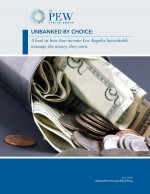 A study by the PEW Charitable Trust (the PEW Health Group) which takes a look at “how low-income Los Angeles households manage the money they earn, titled Unbanked by Choice. The report is one of the most comprehensive studies of the unbanked available, and focuses on certain neighborhoods in Los Angeles. Some of the key findings include: “Almost two-thirds of unbanked individuals in our survey (63%) have never had a bank account. Thus, they constitute an untapped market for banks. More than one-fifth (22%) of the Unbanked who have had accounts have voluntarily left the mainstream banking system, indicating a high level of customer dissatisfaction. Some of the Unbanked (9%) were expelled from their banks and are now unable to get an account.”
A study by the PEW Charitable Trust (the PEW Health Group) which takes a look at “how low-income Los Angeles households manage the money they earn, titled Unbanked by Choice. The report is one of the most comprehensive studies of the unbanked available, and focuses on certain neighborhoods in Los Angeles. Some of the key findings include: “Almost two-thirds of unbanked individuals in our survey (63%) have never had a bank account. Thus, they constitute an untapped market for banks. More than one-fifth (22%) of the Unbanked who have had accounts have voluntarily left the mainstream banking system, indicating a high level of customer dissatisfaction. Some of the Unbanked (9%) were expelled from their banks and are now unable to get an account.”
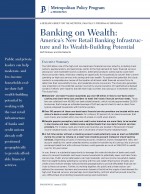 A paper published in January 2008 by the Brookings Institution titled: Banking On Wealth: America’s New Retail Banking Infrastructure and Its Wealth-Building Potential. The paper discusses “The $100 billion size of the high-cost non-bank basic financial services industry, including check cashers, payday lenders, and pawnshops, points to the high demand for basic financial services among low- and moderate-income customers. Alternative products sold by banks could meet those consumer needs, while also creating an opportunity for households to convert their current spending on high-cost services into savings and even wealth.”
A paper published in January 2008 by the Brookings Institution titled: Banking On Wealth: America’s New Retail Banking Infrastructure and Its Wealth-Building Potential. The paper discusses “The $100 billion size of the high-cost non-bank basic financial services industry, including check cashers, payday lenders, and pawnshops, points to the high demand for basic financial services among low- and moderate-income customers. Alternative products sold by banks could meet those consumer needs, while also creating an opportunity for households to convert their current spending on high-cost services into savings and even wealth.”
 The Consumers Union (the non profit publisher of Consumer Reports), working in conjunction with the Consumer Federation of America and the National Consumer Law Center, published Prepaid Cards: Second-Tier Bank Account Substitutes in August 2009. The report took a critical view of the prepaid card industry, and provided (at the time) one of the most comprehensive analyses of prepaid card fees available. The report shows the wide range of fees that some prepaid debit cards charge. The report goes on to state that: “consumers face dangers and traps with prepaid cards, which are becoming the foundation of a second-tier banking system that shadows the traditional banking system.”
The Consumers Union (the non profit publisher of Consumer Reports), working in conjunction with the Consumer Federation of America and the National Consumer Law Center, published Prepaid Cards: Second-Tier Bank Account Substitutes in August 2009. The report took a critical view of the prepaid card industry, and provided (at the time) one of the most comprehensive analyses of prepaid card fees available. The report shows the wide range of fees that some prepaid debit cards charge. The report goes on to state that: “consumers face dangers and traps with prepaid cards, which are becoming the foundation of a second-tier banking system that shadows the traditional banking system.”